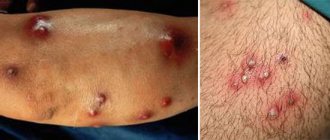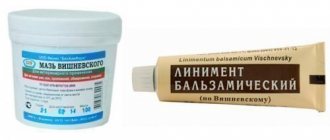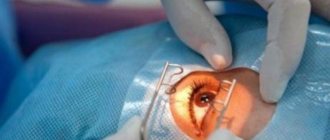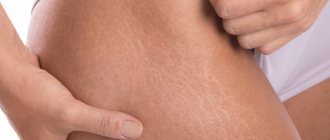Boils can form on the face and body, almost anywhere. A furuncle under the armpit is one of the most common phenomena, due to increased sweating and friction. It occurs against a background of weakened immunity due to problems with personal hygiene, injuries and systemic diseases. How to treat a boil under the arm depends on the patient’s condition and the size of the formation. For the most part, you can deal with an abscess at home.
Read about what a boil is in a separate article.
What does a boil under the arm mean?
If a boil appears under the arm (as a boil is popularly called), this means that pathogenic microflora (usually Staphylococcus aureus) has penetrated the hair follicle. Inflammation spread to adjacent tissues, leading to the formation of an abscess. It can be treated at home if there are no complications. In severe cases of the disease, you will have to consult a doctor to open the abscess and prescribe antibiotic therapy.
Is it possible to squeeze out a boil?
When a boil occurs under the armpit, almost every person has an irresistible desire to squeeze out the lump. Theoretically, such a procedure will help get rid of pain and developmental symptoms. But in practice, it is impossible to squeeze out an immature abscess. It is possible to crush the inflamed follicle under the skin, this will lead to the spread of the bacterial pathogen through the blood in the human body. Often such actions become a predisposing factor to the appearance of multiple furunculosis throughout the body. The most dangerous results of self-squeezing or treatment are meningitis, sepsis, abscesses of internal organs and death.
Mature boils located under the arms are easier to squeeze out, but the risk of follicle rupture remains unchanged. Disclosure manipulation can be carried out by surgeons in a medical facility, subject to the rules of asepsis and antisepsis.
Self-squeezing, piercing, cutting is strictly prohibited.
Why and why do abscesses appear in this particular place: 10 reasons
The activity of Staphylococcus aureus is what causes boils to appear in the armpit, as well as in other places on the body or face.
Normally, the activity of this microbe is suppressed by the immune system, but the protection is weakened if:
- Do not wash - water procedures wash away excess bacteria from the skin; in their absence, staphylococcus multiplies faster.
- Do not wash off deodorant and other cosmetics from your armpits before going to bed. Most products clog pores, which prevents toxins from being released through the skin.
- Washing too often. If you take a shower and rub your body with a washcloth more than 2 times a day, the protective fat layer will be washed off, the skin will crack, and microbes can easily crawl into the resulting “gaps in the defense.”
- Get sick. Systemic diseases, both acute and chronic, weaken the immune system, which causes bacterial skin rashes.
- Shave without treating the tool and skin with an antiseptic. During the procedure, the top layer of skin is cut off from the hair, which leads to the formation of microtraumas.
- Do waxing or sugaring in unsanitary conditions. In this case, the hair is pulled out by the roots, and infection easily penetrates into the empty hair follicles.
- Giving your towels, razor or deodorant to another person. If people live in the same apartment, it is not a fact that their staphylococci will get along with each other.
- Be nervous. Psychosomatics increases the risk of boils, since nervous tension weakens the immune system.
- Wear synthetic clothing. It’s even worse if things crash into the body. Sweat is a favorable environment for the proliferation of staphylococcus. Cotton underwear will absorb it, synthetics will not.
- Be overweight. Folds of fat create additional friction when moving. This injures the skin, which increases the activity of staphylococcus.
Prevention methods
You can reduce the risk of infection with staphylococcal bacteria and the development of furunculosis if:
- keep your body clean, take a shower regularly;
- carefully treat injuries and cuts;
- lead a healthy lifestyle;
- exercise regularly;
- diversify your diet, focusing on foods high in vitamins.
In addition, it is important to promptly treat emerging diseases of internal organs, as well as dress according to the season, avoiding overheating or hypothermia of the body.
What it looks like: photo
In the photo, the beginning boil under the arm looks like normal redness; later a protruding red bump with a white dot in the center will appear. This point is the tip of the shaft of the boil, and also the place of its probable breakthrough.
How long an abscess matures depends on the individual characteristics of the body and the number of bacteria in the hair follicle. The average lifespan of a boil before a breakthrough is 5-10 days.
How to speed up ripening and cure a boil under the armpit at home: 5 ways
Not knowing how to speed up ripening, people try to burn boils with brilliant green or iodine. This should not be done, since burning antiseptics will not harm the bacteria under the skin, but they can cause a burn, since the skin in the armpit is very delicate.
At the stage of preparation for the breakthrough of the abscess, the only thing that can be done is to wipe the armpit with Furacilin or Chlorhexidine, as well as apply special compresses (according to prescriptions) that accelerate the growth and subsequent breakthrough of the abscess.
The use of special ointments, which were discussed in more detail in this article, is also relevant. Read about the best folk remedies for boils here. If it comes to an abscess, be sure to read about abscess boils. The best treatment options are here.
After a breakthrough, the resulting wound is washed with an antiseptic that does not burn the skin (Furacilin, Miramistin, Chlorhexidine, etc.). It is best to apply a sterile bandage with Levomekol (change 1-2 times a day) to prevent re-infection of the abscess.
Dry heat
The easiest way that does not require wasting time and resources. You will need to prepare a cloth bag, as well as salt. The second is placed in the first and warmed up. Its temperature should not exceed 40-45°, otherwise there is a risk of skin burns. The bag is applied to the armpit with the boil for 15-20 minutes 2-3 times a day.
Heat increases blood flow to the affected area and speeds up metabolic processes. This leads to accelerated maturation of the abscess. The method reduces the waiting time for a breakthrough by half, and it also soothes the pain. Contraindicated at elevated temperatures.
aloe leaf
Aloe leaf has bactericidal properties, so it is advisable to use it to treat mild boils. To apply a compress, you will need a freshly picked aloe leaf, a knife, a bandage, cling film, and also clothes that you don’t mind throwing away. Aloe juice is difficult to wash off from things and bedding, so it is important not to stain anything during the procedure.
The sheet is cut lengthwise and applied with a cut to the affected area, fixed with film. The plant is tightly bandaged to the armpit and held for 15-20 minutes. After this, the compress is removed. Repeat - 2-3 times a day.
The used aloe leaf should be thrown away and cannot be reused. After contact with infected skin, bacteria remain on it; using the sheet for other compresses will harm the patient.
Black bread with salt
To prepare the compress you will need 20-30 g of bread crumb, a tablespoon of boiled water and half a teaspoon of salt. Add salt to the water, stir, and then crumble the crumb into the liquid and grind until a homogeneous paste is obtained.
If there is not enough water, you can add another spoon - the main thing is that the output is a mass reminiscent of thick sour cream in consistency. The resulting mixture is applied to the abscess, and then a gauze bandage is applied to the armpit. Keep the compress for 20-30 minutes 3 times a day.
The purpose of salt is to corrode the inflamed skin above the core of the boil, and the bread gruel is intended to remove pus. After the boil breaks out, the wound is washed with an antiseptic and a sterile bandage is applied.
Some manuals on traditional methods of treatment advise chewing bread rather than rubbing it with boiled water. You cannot follow this advice, because saliva is full of pathogenic microflora. If it gets on a purulent wound, a secondary bacterial infection will occur.
Baked onions with camphor oil
A bottle of camphor oil costs about 20-25 rubles. This remedy has antimicrobial and anti-inflammatory properties, and it also reduces pain.
The purpose of baked onions in combination with camphor oil is to speed up the drawing of pus from the hair follicle to the surface of the abscess. To prepare the compress, one onion needs to be peeled and baked in the oven at a temperature of 160-180° for 20-30 minutes. Preheat the oven to the desired temperature before placing the vegetable in it.
The finished onion is cooled to the temperature at which it can be safely handled with your hands. Crush the mixture into a paste and mix with a tablespoon of camphor oil. Apply the mixture to the boil and the area around it, bandage it in any convenient way.
The compress can be kept for 30-45 minutes, do it twice a day. To save time, you cannot replace baked onions with fresh ones. An unprocessed vegetable will leave a burn on the skin of the armpit, which will aggravate the course of the disease and can lead to full-blown furunculosis.
Raw grated potatoes
Raw potatoes are able to draw out pus due to the starch it contains. To prepare a medicinal compress, you need to peel and grate one medium-sized tuber. It is better to use a coarse grater, since a fine one produces too much water.
The potato pulp is applied to the armpit in a thick layer (1 cm thick) and bandaged carefully. This compress can be left overnight; you can additionally wrap your hand with cling film and a warm towel. How convenient, just to fix it.
Frequency: 1-2 times a day.
Old potatoes are best suited for this procedure. The young one has too little starch, but a lot of liquid. You cannot cut the potato with a knife instead of grating it, because the piece will not fit tightly to the boil, which will reduce the healing effect of the method.
Any of the above methods can be used if there is no individual sensitivity to the components, as well as if the boil occurs normally.
If you have a fever, chills, severe pain, or shooting, it is important to see a doctor for an in-person appointment as soon as possible. If a rash, itching and swelling appears in the area where the home remedy is used, wash it off with warm water and soap and take an antihistamine tablet (Loratadine, Cetrin and others).
Which doctor should I contact if nothing helps?
The therapist decides what to do if the boil does not open. He sends most patients to a surgeon to open the boil and apply a sterile bandage to the wound; sometimes you should visit a dermatologist.
Antibacterial ointment - Levomekol or its analogues - is applied under these dressings. You need to change the bandage twice a day; if you can’t do it yourself, you’ll have to go to the treatment room.
It is vital to consult a doctor if, against the background of an unopened boil, the patient’s temperature rises, headache, weakness and fatigue appear. These symptoms indicate intoxication.
Causes
The inflammatory process and tissue suppuration are promoted by:
- non-compliance with personal hygiene requirements or its inadequate quality;
- constant friction of clothing on the skin;
- abrasions and injuries that provide access to the subcutaneous layer for bacteria;
- intensive work of the sebaceous and sweat glands;
- hypovitaminosis;
- metabolic disorders.
Most boils form on areas of the skin with hair follicles. They often appear on the neck, face, back of the hands, and in the lumbar region. At the initial stage, inflammation makes itself felt by the appearance of a characteristic red bump that rises above the surface of the skin. After 3-4 days, a purulent head appears. Later, the boil breaks out under the influence of an increase in the volume of purulent secretion or mechanical impact. At the site of the skin break, a core is visible - the so-called necrotic tissue. 2-3 days after the rupture, the rod, along with the remainder of the purulent contents, is rejected, and the wound begins to heal.
Are you experiencing symptoms of boils and furunculosis?
Only a doctor can accurately diagnose the disease. Don't delay your consultation - call
Furuncle under the armpit of a child: recommendations
Children are less susceptible to both the risk of developing boils and various complications. If a child has a boil under his arm, you need to make sure that the child does not scratch the sore spot. It is necessary to smear the location of the boil with an antiseptic 2-3 times a day - Chlorhexidine, Furacilin, Miramistin.
Methods applied to adult patients will help speed up the ripening of boils. If there is an increase in body temperature or multiple ulcers, you cannot self-medicate - the child is taken to see a pediatrician. After visiting a doctor, the boil under the arm is treated according to the regimen prescribed by him.
Precautions during treatment
There are certain precautions that need to be taken into account when treating boils located under the arms:
- wash your hands before touching boils;
- do not shave your armpits;
- Antiperspirants should not be used;
- limit the use of shared towels;
- It is prohibited to visit public bathing areas;
- It is forbidden to squeeze or puncture the abscess.
Following simple precautions will help avoid complications and negative health consequences.
Treating a boil under the arm is a simple but painstaking process that requires a person’s attention and proper care. You should not delay visiting a doctor if an abscess occurs, because an ordinary abscess can cause a dangerous disease.
The article has been reviewed by the site editors










